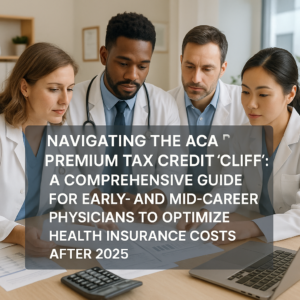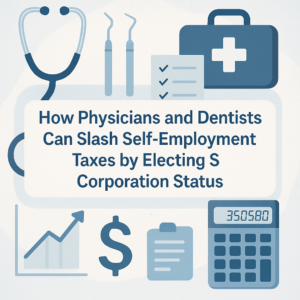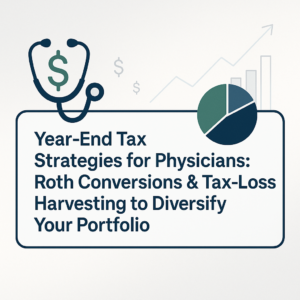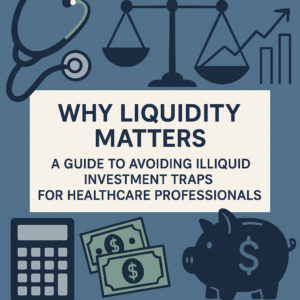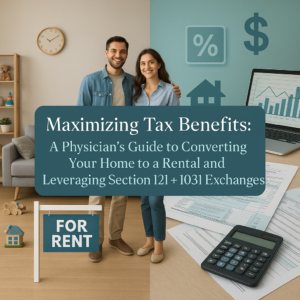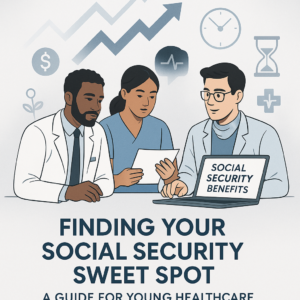In this fast-paced world, where convenience often takes precedence, credit cards have become an indispensable part of our financial toolkit. But with convenience comes responsibility, and understanding the intricacies of credit card management, particularly APR, is vital. Essentially, APR represents the annual rate charged for borrowing through a credit card, including interest rates and fees.
For young healthcare workers, financial challenges can be especially daunting. Many are managing student loans, paying for continuing education, and often facing the high cost of living in urban areas where major medical centers are located. According to the American Association of Medical Colleges, the median medical school debt for 2020 graduates was $200,000. This substantial burden, coupled with high APR on credit cards, can quickly spiral out of control if not managed properly. High APR can sneak up on you, increasing the amount you owe swiftly if balances are not paid off in a timely manner. Managing high APR credit card debts efficiently can lead to financial peace and provide the freedom to focus on your professional and personal aspirations without undue stress.
Understanding High APR and Its Consequences
Annual Percentage Rate (APR) refers to the annual rate of interest charged on borrowed money. For credit cards, it’s a crucial figure that determines how much you will pay in interest if you carry a balance month to month. Credit cards often come with variable APRs, meaning the rate can change based on an index (such as the prime rate) as well as your creditworthiness.
A high APR is generally considered to be anything above 15%, though this can vary based on market conditions and individual financial profiles. High APRs can range from 15% to over 30%, and carrying debt at such rates can quickly lead to significant interest accrual, compounding financial difficulties over time.
Different Types of Credit Cards and Their Variable APRs
Credit cards come in many varieties, each with different APRs. For instance, rewards cards often have higher APRs due to the perks and benefits they offer, such as cash back or travel points. On the other hand, balance transfer cards may offer lower APRs or even 0% introductory rates for a limited period, designed to attract those looking to consolidate debt. However, these introductory rates typically revert to much higher rates after the promotional period.
Hypothetical Example
Consider Dr. Jane, an early-career pediatrician with a substantial credit card balance due to a combination of student loans and relocation expenses. Her initial card had a 0% APR for the first 12 months, which she initially managed well. However, after the introductory period, her APR jumped to 24.99%. Within six months, her balance grew exponentially as the high interest compounded. By understanding the terms and planning accordingly, she could have avoided this financial pitfall.
Consequences of High APR Credit Card Balances
The consequences of carrying a balance on a high APR credit card can be severe:
- Interest Accumulation: High APR means that interest charges will add up quickly, inflating your debt and making it harder to pay off.
- Minimum Payments Trap: Paying only the minimum amount due each month will predominantly cover interest charges, leaving your principal balance relatively untouched.
- Credit Score Impact: High credit card balances can negatively affect your credit utilization ratio, a significant factor in calculating your credit score, leading to a lower score over time.
- Financial Stress: The burden of high-interest debt can create financial and emotional stress, affecting your quality of life and mental well-being.
- Opportunity Cost: Money spent on interest payments cannot be used for other financial goals, such as saving for a home, investing, or retirement planning.
Strategies to Pay Off High APR Credit Card Debt Quickly
Effective debt management starts with a clear, actionable plan. Here’s how you can create one:
1. List All Your Debts:
Start by listing all your credit card debts along with their respective balances, APRs, and minimum payments.
2. Prioritize Debts:
Focus on paying off the debt with the highest APR first, known as the avalanche method, as this will save you the most money in interest over time. Alternatively, the snowball method, where you pay off the smallest balance first, can provide quick wins to keep you motivated.
Avalanche Method Example
Let’s say you have the following debts:
- $2,000 at 24% APR
- $3,000 at 18% APR
- $1,500 at 12% APR
With the avalanche method, you would focus on paying off the $2,000 debt at 24% APR first, while making minimum payments on the other debts. Once that highest APR debt is paid off, you move to the next highest APR debt.
Snowball Method Example
Using the same debts, you would focus on the $1,500 at 12% APR first because it is the smallest balance. The quick win of paying off this debt can boost your motivation to tackle the remaining debts.
3. Allocate Extra Payments:
Direct any extra income or savings towards paying off the high APR debts. This can include bonuses, tax refunds, or proceeds from selling unused items.
Create a Budget and Stick to It
Budgeting is pivotal in managing and eventually eliminating high APR credit card debt:
- Track Your Expenses: Use budgeting tools or apps to monitor all your expenses, categorize them, and identify areas where you can cut back.
- Set Spending Limits: Allocate specific amounts for discretionary spending and stick to these limits to avoid accumulating additional debt.
- Reduce Unnecessary Expenses: Cut down on non-essential spending such as dining out, subscriptions, and luxury items.
- Redirect Savings to Debt: Channel the money saved from budgeting and reduced expenses towards your credit card debt repayment.
By adhering to a detailed budget, healthcare workers can strategically channel their income towards reducing high APR debt, safeguarding their financial future.
Balance Transfers
Consider transferring your high APR credit card balances to cards with lower or 0% introductory APR offers:
- Identify Suitable Cards: Research credit cards offering balance transfer promotions with lower APRs or 0% APR for an introductory period, typically 6-18 months.
- Calculate Transfer Fees: Be mindful of any balance transfer fees, usually a percentage of the amount transferred, and ensure the savings on interest outweigh these fees.
- Adhere to Payment Plan: Make sure to pay off the transferred balance within the introductory period to avoid reverting to the standard higher APR.
Checklist for Balance Transfer Decisions:
- Evaluate Credit Score: Ensure your credit score is high enough to qualify for the best offers.
- Calculate Total Savings: Compare the potential interest savings against any balance transfer fees.
- Read Fine Print: Look out for how the post-introductory APR compares.
Personal Loans
You can also consider taking out a personal loan to pay off high APR credit card debt:
- Shop for Personal Loans: Compare personal loan offers from various lenders, focusing on those with lower interest rates than your credit cards.
- Use Loan to Pay Off Credit Cards: Use the loan amount to clear your high APR credit card balances in one go.
- Repay Personal Loan Carefully: Benefit from a fixed repayment schedule and lower interest rates by consistently making your personal loan payments on time.
Pros and Cons of Personal Loans:
Pros:
- Fixed interest rates provide stable monthly payments.
- Typically lower APRs than most credit cards.
- Can consolidate multiple debts into one payment.
Cons:
- Potential upfront fees or origination fees.
- May require collateral, depending on lender.
- Impact on credit score due to a new line of credit.
Emergency Fund Establishment
A well-funded emergency account can prevent accumulation of high APR credit card debt:
- Separate Savings Account: Consider opening a high-yield savings account dedicated to emergencies, ideally with at least three to six months’ worth of living expenses.
- Automatic Savings: Set up automatic transfers into your emergency fund to ensure consistent growth.
- Only for True Emergencies: Use this fund strictly for unexpected, urgent expenses, not for routine costs or discretionary spending.
Examples of Emergency Situations:
- Medical emergencies or unexpected health issues.
- Car repairs or transportation emergencies.
- Unplanned travel for family emergencies.
- Job loss or sudden income loss.
Benefits of Working with a Financial Advisor
A financial advisor can be a valuable partner in managing credit card debt:
- Personalized Debt Repayment Strategy: Advisors can help craft a customized plan tailored to your financial situation, goals, and debt levels.
- Professional Guidance: Benefit from their expertise in navigating complex financial decisions and taking advantage of tools and resources you may not be aware of.
- Continuous Support: Regular check-ins with an advisor can help ensure you stay on track and make necessary adjustments as your financial landscape evolves.
Choosing a Financial Advisor:
- Look for credentials such as CFP® (Certified Financial Planner™).
- Consider advisors who have experience working with healthcare professionals.
- Use platforms like XY Planning Network, NAPFA, or CFP Board, to find advisors who align with your financial goals.
Additional Tips to Avoid High APR Credit Cards in the Future
Understanding Credit Card Terms
Before accepting a new credit card offer, make sure you understand the terms:
- Read the Fine Print: Review all terms and conditions, paying close attention to APR, fees, and penalty rates.
- Introductory Offers: Be aware of introductory offers that might revert to high APRs after a promotional period.
- Rewards vs. Interest: Evaluate whether the rewards and benefits of a credit card are worth the potential interest charges if you carry a balance.
Maintain a Good Credit Score
A good credit score can qualify you for cards with lower APRs and better terms:
- Timely Payments: Make all debt payments on time to build a strong payment history.
- Debt Management: Keep credit card balances low relative to your credit limits.
- Credit Utilization: Aim to maintain a credit utilization ratio below 10% to improve your credit score.
- Monitor Credit Reports: Regularly check your credit reports for discrepancies and address any errors promptly.
Practical Examples of Good Credit Habits:
- Automated Payments: Setting up automated payments ensures you’re never late on a payment, which positively impacts your credit score.
- Payment Reminders: Use payment reminder apps or calendar alerts to avoid missing due dates.
- Keeping Old Accounts Open: Even if you rarely use an old card, keeping it open helps maintain the length of your credit history.
Credit Limit Increases
Requesting periodic increases in your credit limits can improve your credit score and lower your utilization ratio:
- Request Increases Strategically: Aim to request credit limit increases every six months.
- Manage Increased Limits Carefully: Do not use the increased limits as an opportunity to accumulate more debt.
Conclusion
High APR credit card debt can be a formidable obstacle on your path to financial freedom, particularly for young healthcare workers facing unique financial pressures. By understanding the impact of high APR, implementing effective repayment strategies, engaging in regular financial planning, and avoiding high APR credit cards, you can take control of your finances and reduce the stress associated with high-interest debt.
Taking proactive steps, such as creating a budget, seeking professional financial advice, and establishing a solid emergency fund, will empower you to tackle high APR credit card debt effectively. Remember, managing your finances is an ongoing journey that requires diligence, education, and consistent effort.

